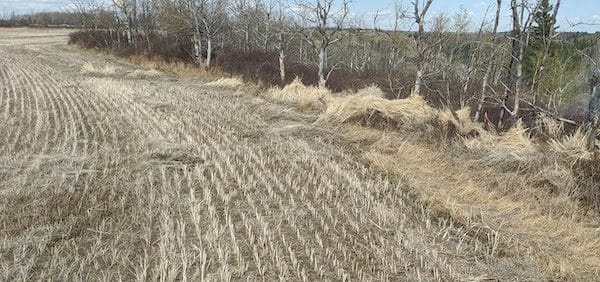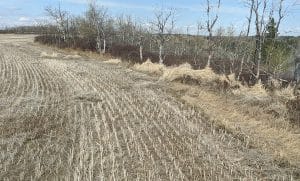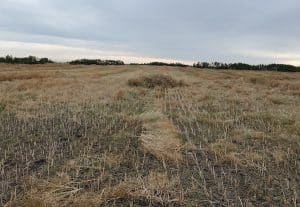Checking for losses. Canola producers can lose five bushels per acre – perhaps even more – if the combine isn’t adjusted properly. Please read this article for tips to measure combine losses and make adjustment to limit those losses. This will put more canola in the bin and reduce the volunteer canola seedbank.
Small seeds. With the hot dry end to the season, some canola seeds may not have filled out as much as they would have under ideal growing conditions. Capturing these small seeds may require some adjustment to combine sieves and fan speeds. While checking for harvest losses, run the collected samples over a set of screens to see whether small seeds are getting thrown over more than larger seeds. Use the Combine Optimization Tool to identify settings that will help reduce any problems observed.
Are small seeds dockage? Information from CCGA suggests that small sound seed is not necessarily dockage, but if canola goes through a 0.028 slotted sieve, which is the smallest canola sieve, these small seeds would be considered as dockage. While there is not a strict sieve size to use when grading, there is an appropriate size depending on the size of the canola. So farmers may want to check with their elevators to make sure they are not losing small canola through the larger canola sieves and having these seeds included in dockage.
Wind-blown swaths. High winds are blowing around canola swaths this week. This article has tips on how to limit wind damage to swaths, and well as a few things to consider if swaths have blown.
Pre-harvest products. If weed control is the goal, assess the weed situation before spraying. Pre-harvest is a good time to control perennial weeds, especially because it can take a long time for them to regrow to a size big enough for a post-harvest application. Moderate to heavy infestations of annual or grassy weeds could be sprayed out before straight combining, but note that annual grassy weeds are quite mature by canola harvest. Even if immature, they’ve set seed, so spraying isn’t accomplishing anything other than to try to dry down the weeds to improve the harvest operation. If desiccation (crop and weed dry-down) is the goal for straight combining, this decision should wait until just before harvest. This article explains options and timing. Whenever applying products close to harvest, check the pre-harvest interval with the Spray to Swath calculator.
Straight combining – timing. Canola seeds can be ready to harvest even if pods and stems are a little greener than you’d expect, but the right time to start often depends on personal preferences for stalk dry down, pod dry-down and seed moisture.
Lodged crop – swath or straight combine? Swathing has no clear advantage over straight combining for lodged canola. It often comes down to personal preference, but these questions can help with your decision.
Why does canola lodge?
Swath timing. Optimal swath timing for canola yield and quality is when at least 60 per cent of seeds on the main stem are showing some colour change. How to determine seed-colour change.
CGC Harvest Sample Program. Sign up for sample bags and send them in for free quality assessment, including dockage and green counts, and unofficial grade.
Dig Deeper
Podcast: Combine College highlights
Podcast: Canola grain drying study results
Podcast: 5 tips to Keep It Clean
Webinar: How to use the Combine Optimization Tool


